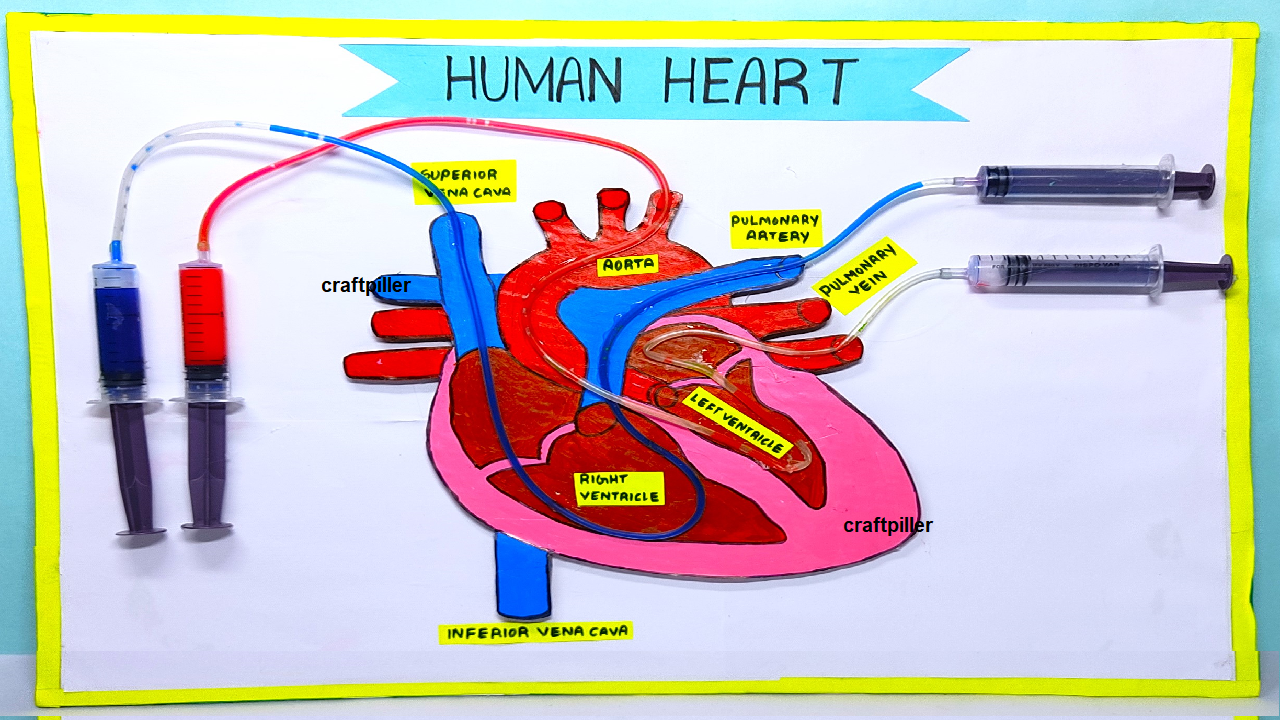Functionality of Heart in human body
The heart is a muscular organ that pumps blood throughout the body.
It is divided into four chambers: the right atrium, which receives deoxygenated blood from the body; the left atrium, which receives oxygenated blood from the lungs; the right ventricle, which pumps deoxygenated blood to the lungs for oxygenation; and the left ventricle, which pumps oxygenated blood to the rest of the body.
The heart also has a network of blood vessels, including the arteries, which carry oxygenated blood away from the heart, and the veins, which carry deoxygenated blood back to the heart.
The heart also has a system of valves, including the tricuspid valve between the right atrium and right ventricle, the mitral valve between the left atrium and left ventricle, the pulmonic valve between the right ventricle and the lungs, and the aortic valve between the left ventricle and the aorta.
These valves ensure that blood flows in one direction through the heart and prevents backflow.
#heartworkingmodel #heartmodel #scienceexhibition #sciencemodel #scienceproject #biologymodel #biologyproject #biology #workingproject #sciencefair
Steps for making heart working model using syringes
A syringe can be used to make a working model of the heart by creating a pump mechanism.
The syringe can be used as the ventricle of the heart, with the plunger representing the muscle that contracts and pushes blood out of the heart.
The syringe can be connected to tubing to represent the blood vessels leading away from the heart.
Additional components, such as valves and chambers, can be added to the model to demonstrate the various parts and functions of the heart.

Video step by step instructions on heart working model
What is the function of the heart?
The heart is a muscular organ that pumps blood throughout the body, delivering oxygen and nutrients to the cells and removing waste products.
How does the heart pump blood?
The heart pumps blood through a system of chambers and valves. The right atrium receives deoxygenated blood from the body and pumps it into the right ventricle.
The right ventricle then pumps the blood into the lungs, where it receives oxygen. The oxygen-rich blood then returns to the left atrium, which pumps it into the left ventricle.
The left ventricle then pumps the oxygen-rich blood out to the body.
What are the different parts of the heart?
The heart has four chambers: the right atrium, the left atrium, the right ventricle and the left ventricle.
The heart also has four valves: the tricuspid valve, the pulmonary valve, the mitral valve, and the aortic valve.
What is the role of the coronary arteries in the heart?
The coronary arteries supply the heart muscle with oxygen-rich blood. When these vessels become blocked or narrowed, it can lead to a condition called coronary artery disease, which can increase the risk of heart attack.
What are some common heart diseases?
Common heart diseases include coronary artery disease, heart failure, arrhythmias, and congenital heart defects.

